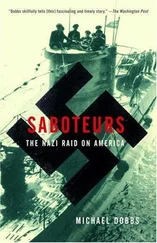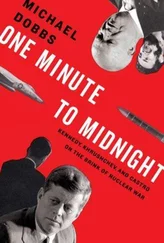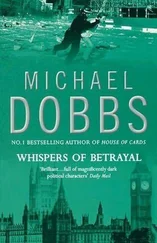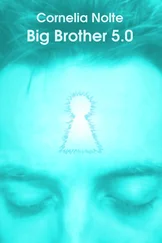There were wild men on the Croat side too. In mid-April a group of HDZ members led by Gojko Šušak, the founder of a Canadian pizza company and adviser to Tuđman, decided to teach the Serbs a lesson. They forced the local police chief, Josip Reihl-Kir, a moderate who had worked tirelessly to reduce ethnic tensions, to take them to Borovo Selo. Approaching the village through the cornfields, they fired three shoulder-launched missiles at Serb positions. The missiles did not do much damage, but they were seized upon by the Belgrade propaganda machine as proof that Croatia was bent on war. Šušak, who rose to become defense minister in the Croatian government, later boasted that he had fired the first shell against the Serbian “aggressors” in eastern Slavonia. 63
THE ETHNIC TINDERBOX WAS IGNITED on Thursday, May 2. The Serbs of Borovo Selo had been celebrating May Day, a traditional Yugoslav feast day, and the village was adorned with the Yugoslav blue, white, and red tricolor emblazoned with the Red Star. Across the cornfields, in the predominantly Croat settlement of Borovo Naselje, people had hung out the Croatian checkerboard.
Shortly after midnight two Croatian police cars drove into town, from the direction of Borovo Naselje. The policemen began to haul down the Yugoslav flag from a post and immediately found themselves surrounded by angry Serbs. Shots were fired; each side later accused the other of firing first. Two of the Croatian patrolmen were detained by Serb vigilantes, and the others fled. In response the Croat authorities dispatched a group of twenty armed policemen to Borovo Selo to investigate the fate of the patrolmen.
As the Croatian police vehicles entered the village, they were ambushed by Serb militants. During the resulting battle twelve of the Croatian policemen and three Serb irregulars were killed. That afternoon Yugoslav People’s Army units arrived in Borovo Selo, with the declared aim of keeping the warring ethnic communities apart. A few days later the Croatian authorities released photographs purporting to show the mutilated corpses of three of the police. One had an arm chopped off, another had been slashed across the face, while the third had the skin ripped off his back. Such atrocities had been commonplace in World War II and were a gruesome reminder of what could happen again if war were allowed to break out between the rival ethnic communities.
The Croatian police chief, Josip Kir, had favored a policy of negotiating with the rebel Serbs. But he was no longer able to control his own side. Šušak and the other hard-liners had taken over. Convinced that his own life was in danger, Kir begged his superiors to transfer him back to Zagreb. The day before he was due to leave, he was murdered by one of his own subordinates in what his wife described as a politically motivated killing. 64
Once it had been set in motion, the downward spiral toward uncontrollable violence proved impossible to stop. Croat activists set up barricades on the outskirts of Borovo Naselje, next to the shoe factory. Soon former workmates who had happily shared their lunch breaks together were shooting at one another across the cornfields. Within a few weeks the sniper fire had been replaced by artillery barrages and tank salvos. Croatian national guardsmen moved into Borovo Naselje, while the Yugoslav army formed a defensive ring around Borovo Selo, less than half a mile away. Serbs living in predominantly Croat communities were forced out of their houses at gunpoint; the houses were then blown up from the inside. The same thing happened to Croat families that found themselves on the wrong side of the ethnic dividing line. Each side accused the other of planning a massacre.
The toughest fighters on both sides were almost invariably the poor immigrants whose families had arrived from the mountains on the “trains without a timetable” in Tito’s social revolution after World War II. Up until recently many of these people had been stuck in demeaning jobs at the Borovo shoe factory. The Croat commander of Borovo Naselje, Blago Zadro, was a typical example. He was a Herzegovinian, from the Dalmatian hinterland. Before the war he had a job mixing chemicals and rubber, a particularly unpleasant task. After his department had been closed down, he spent three months in the reorganized Croatian police force. He also had a high position in the local branch of the HDZ. 65
The Serb commander of Borovo Selo, Vitomir Devetek, had a similar background. He too came from the mountains, and he too had been working in a dead-end job at the factory, producing bulletproof vests. Along with dozens of other Serbs, he had been dismissed in March after refusing to sign a loyalty oath to the republic of Croatia. His forces included thirty-five Serbs fired from the Vukovar Police Department.
“The Croatian people must understand. They will never have the independent state they imagine in their sick heads,” Devetek told an American reporter in early July as he patrolled the front line. “Sooner or later, we will attack Borovo Naselje and liberate it. Then we will liberate Vukovar.” 66
VLADIMIR KRYUCHKOV was convinced that the world’s first Communist state was headed for political disintegration and economic catastrophe. He had used every trick in the KGB disinformation manual to persuade Gorbachev to impose a nationwide state of emergency. He had accused Lithuanian independence activists of launching an armed uprising and firing on Soviet troops. He had planted stories about a conspiracy by Western bankers to wage “financial war” against the Soviet Union by flooding the country with cheap rubles. He had talked about CIA plots to recruit Soviet leaders as “agents of influence” and destroy the rival superpower. He had even informed Gorbachev about a bizarre scheme by opposition activists to storm the Kremlin with “hooks” and “ladders.” 67
At first it seemed that all this disinformation might be producing the desired effect. The president had gone along with some of the KGB chief’s schemes to curb the democratic opposition and restore order in the country. At the crucial moment, however, he had called a halt to the machinery of repression. Over the past few months Gorbachev had drifted away from the hard-liners and formed an alliance with republican leaders who were intent on grabbing as much power as possible from the center.
Time was running out for Kryuchkov. Leaders from all over the country were due to come to Moscow on August 20 to sign a new Union Treaty, bringing to an end seven decades of centralized rule. The USSR—the Union of Soviet Socialist Republics—would cease to exist. Its place would be taken by a much looser confederation, to be known as the Union of Sovereign States.
The decision to omit any mention of “socialism” from the constitution of the new state was alarming enough. Even more troubling were indications that there would not be a place for “principled Communists” in the new order. The KGB had recorded a conversation between Gorbachev and the two most influential republican leaders, Boris Yeltsin of Russia and Nursultan Nazarbayev of Kazakhstan, at the end of July. After a grueling round of negotiations on the new Union Treaty at the president’s dacha at Novo-Ogaryevo, the three leaders had turned their attention to possible personnel changes. At Yeltsin’s insistence, part of the conversation had been held on the balcony, to avoid eavesdroppers. But the microphones had nevertheless picked up their remarks, and the transcript made devastating reading.
Yeltsin had argued forcefully that nobody would believe in the new Union Treaty unless Gorbachev replaced the most “odious” members of his entourage. At the top of his list was Kryuchkov, who had the attempted coup in Lithuania “on his conscience.” Nazarbayev supported the demand for a purge and mentioned the name of Boris Pugo, the hard-line interior minister. Yeltsin later recalled that Gorbachev seemed tense but agreed that both security chiefs would be removed. The three leaders also decided to replace the prime minister, Valentin Pavlov, who had allied himself with the conservatives. 68
Читать дальше












